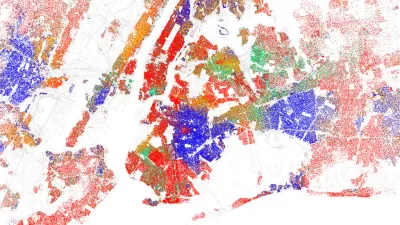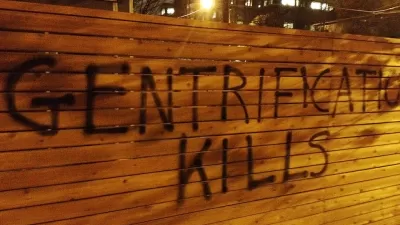In a appeal by no means limited to the Dallas metro region, Mike Koprowski condemns the city's entrenched segregation and calls for a stronger response.

Opportunity Dallas executive director Mike Koprowski takes a strong stance on segregation in Dallas. "Dallas is one of the most residentially segregated places in America, according to the Pew Research Center, with low-income families (disproportionately people of color) overwhelmingly clustered in areas of concentrated poverty [...]"
By income and by race, segregation has been linked to a whole host of urban problems. "We can downplay segregation by saying it's just a symptom of poverty, but segregation is a key driver of poverty because it spatially isolates families from critical assets, resources, transportation, institutions, employment opportunities and networks."
Koprowski points to research by the Metropolitan Planning Council in Chicago, which found that "less segregation can lead to a more balanced property tax base and higher city revenue; better school outcomes and an enhanced workforce pipeline; economic growth and increased productivity; improved safety and lower policing and correctional costs; and a more balanced consumer base across the city."
School and housing policy are some places Koprowski sees as ripe for reform. "The most important thing we can do to reduce concentrated poverty and segregation is to adopt a comprehensive housing policy (which we've never had) that incentivizes and promotes more mixed-income and affordable housing throughout the entire city."
FULL STORY: Segregation in Dallas is a poverty trap

Alabama: Trump Terminates Settlements for Black Communities Harmed By Raw Sewage
Trump deemed the landmark civil rights agreement “illegal DEI and environmental justice policy.”

Study: Maui’s Plan to Convert Vacation Rentals to Long-Term Housing Could Cause Nearly $1 Billion Economic Loss
The plan would reduce visitor accommodation by 25% resulting in 1,900 jobs lost.

Planetizen Federal Action Tracker
A weekly monitor of how Trump’s orders and actions are impacting planners and planning in America.

Waymo Gets Permission to Map SF’s Market Street
If allowed to operate on the traffic-restricted street, Waymo’s autonomous taxis would have a leg up over ride-hailing competitors — and counter the city’s efforts to grow bike and pedestrian on the thoroughfare.

Parklet Symposium Highlights the Success of Shared Spaces
Parklets got a boost during the Covid-19 pandemic, when the concept was translated to outdoor dining programs that offered restaurants a lifeline during the shutdown.

Federal Homelessness Agency Places Entire Staff on Leave
The U.S. Interagency Council on Homelessness is the only federal agency dedicated to preventing and ending homelessness.
Urban Design for Planners 1: Software Tools
This six-course series explores essential urban design concepts using open source software and equips planners with the tools they need to participate fully in the urban design process.
Planning for Universal Design
Learn the tools for implementing Universal Design in planning regulations.
Caltrans
Smith Gee Studio
Institute for Housing and Urban Development Studies (IHS)
City of Grandview
Harvard GSD Executive Education
Toledo-Lucas County Plan Commissions
Salt Lake City
NYU Wagner Graduate School of Public Service





























